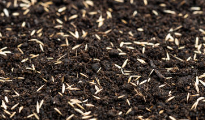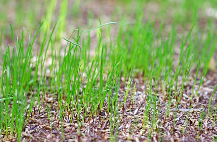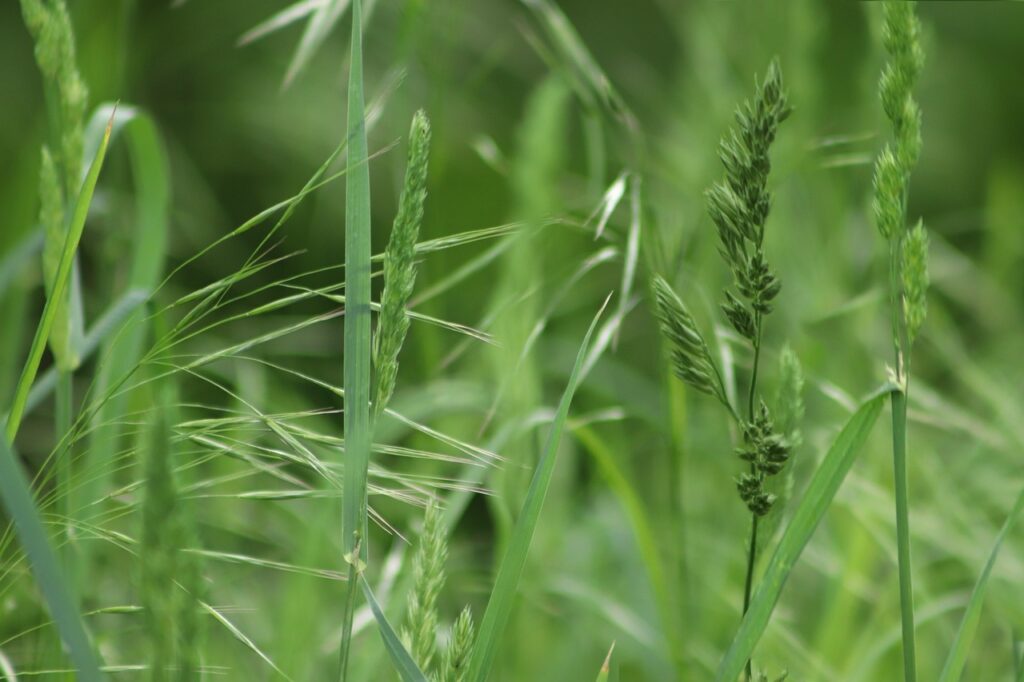with one critical step planting grass seed rightly. Whether you’re filling in bare spots, starting a field from scrape, or potting for a thicker turf, proper ways are essential to success. In this companion, we’ll cover 10 expert tips to help you plant grass seed like a pro and produce the field you’ve always wanted. Let’s dig in!

1. Choose the Right Lawn Seed
Not all grass seeds are created equal. Choosing the right type of grass seed is pivotal for a successful field.
Then’s what you need to consider:
- Climate: Different lawn species thrive in different climates. For illustration, cool- season meadows like Kentucky bluegrass and fescue are ideal for northern regions, while warm- season meadows like Bermuda and Zoysia are more suited for southern climates.
- Sun Conditions :If your field gets full sun, elect a seed mix labeled for sunny areas. For shadowed spaces, conclude for shade-tolerant lawn seed.
- Usage: operation High- business areas need a durable variety, similar as imperishable ryegrass, which can repel wear and tear and gash.
- Soil Type :Some lawn species perform better in flaxen soil, while others thrive in complexion. Check the seed marker for recommendations.
2. Test and Prepare the Soil:
Healthy soil is the foundation of a healthy field. Before planting, test your soil’s pH and nutrient situations. You can buy a soil test tackle or shoot a sample to a original extension office for analysis.
Then’s how to prepare your soil:
- Acclimate pH situations: Lawn grows stylish in soil with a pH between 6.0 and 7.0. Add lime to raise the pH or sulfur to lower it, grounded on test results.
- Aerate the Soil :Compact soil can help grass seeds from establishing roots. Use a core aerator to produce small holes in the soil, allowing air, water, and nutrients to access.
- Remove Debris: Clear the area of jewels, sticks, and weeds to give a smooth face for planting.
- Add Organic Matter: Incorporate compost or clod to ameliorate soil structure and fertility.
3. Timing Is Everything:
Planting grass seed at the right time of time is critical for success.
Then’s a breakdown grounded on lawn type :
- Cool- Season Grasses: Plant in early fall or spring when temperatures range between 60 °F and 75 °F. Fall is ideal because the soil is warm, and weeds are less competitive.
- Warm- Season Grasses: Plant in late spring or early summer when soil temperatures constantly reach 65 °F to 70 °F.
Avoid planting during extreme heat or cold wave, as these conditions can hamper seed germination.
4. Prepare the Seedbed:
Creating the perfect seedbed ensures good seed- to- soil contact, which is vital for germination.

Follow these way:
- Loosen the Soil: Use a cultivator or rake to break up the top 2- 3 elevation of soil.
- position the face: Smooth out uneven areas with a theater rake to help water pooling.
- establishment the Soil: smoothly compact the soil with a comber or your bases, but do n’t overdo it. The soil should be firm enough to walk on without sinking.
5. Spread Lawn Seed Unevenly :
Livery seed distribution is crucial to avoiding patchy growth. Use a broadcast spreader for large areas or a handheld spreader for lower spaces. Follow the sowing rate listed on the seed packaging, asover-seeding can lead to overcrowding and under- sowing can affect in meager growth.
To insure indeed content:
- Divide the seed into two portions.
- Spread one portion walking north- south and the other walking east- west. This cross pattern ensures thorough content.
6. Cover the Seeds smoothly:
grass seed needs light to germinate, so avoid burying it too deeply. After spreading the seed, smoothly troll the soil to cover the seeds with a thin subcaste( about 1/4 inch) of soil. Alternately, apply a light subcaste of straw or seed- starting mulch to retain humidity and cover the seeds from catcalls.
7. Water constantly:
Proper watering is pivotal for grass seed germination. Seeds must stay constantly wettish but not doused .
Follow these guidelines:
- original Watering: Water the area incontinently after planting to settle the soil and start the germination process.
- Daily Watering: Keep the top inch of soil constantly wettish by soddening 1- 2 times daily. Reduce frequence as the lawn grows and roots develop.
- Avoid Over-watering: Too important water can wash down seeds or produce an terrain for fungal growth.
A sprinkler system or a souse sock can help maintain harmonious humidity situations
8.Fertilize at the Right Time:
grass seed needs nutrients to grow, but timing is important to avoid over-fertilizing. Use a starter toxin high in phosphorus( the middle number in the NPK rate) to promote root development.
Then’s how to apply toxin :
- Spread the starter toxin before or in-continently after planting the seed.
- Avoid using high- nitrogen diseases at this stage, as they encourage top growth at the expenditure of roots. Reapply toxin after 4- 6 weeks to sustain healthy growth.
9. cover the Area :
recently planted grass seed is vulnerable to catcalls, bottom business, and corrosion.
Take these way to cover it:
- Install walls: Use temporary fencing to keep faves and children off the area.
- Add Straw or Mulch: Covering the seeds helps retain humidity and prevents them from being washed down.
- Use Netting: Bird network can discourage catcalls from eating the seeds.
10. Be Case and Examiner Progress :
Lawn seed germination takes time, so tolerance is crucial. Depending on the type of lawn, germination can take 5- 30 days.
During this period
- Cover the area daily for signs of sprouting.
- Keep up with harmonious watering and avoid disturbing the soil.
- Watch for weeds and remove them instantly by hand to help competition.
- Once the lawn reaches about 3 elevation in height, you can mow for the first time. Make sure your mower blade is sharp and set to the loftiest setting to avoid stressing youthful lawn.

Final studies :
Planting grass seed like a pro requires careful planning, attention to detail, and ongoing care. By choosing the right seed, preparing the soil, and following these expert tips, you will be well on your way to a thriving, beautiful field. Flash back, the trouble you invest now will pay off with a vibrant green space that you can enjoy for times to come.
HAPPY GARDENING!
